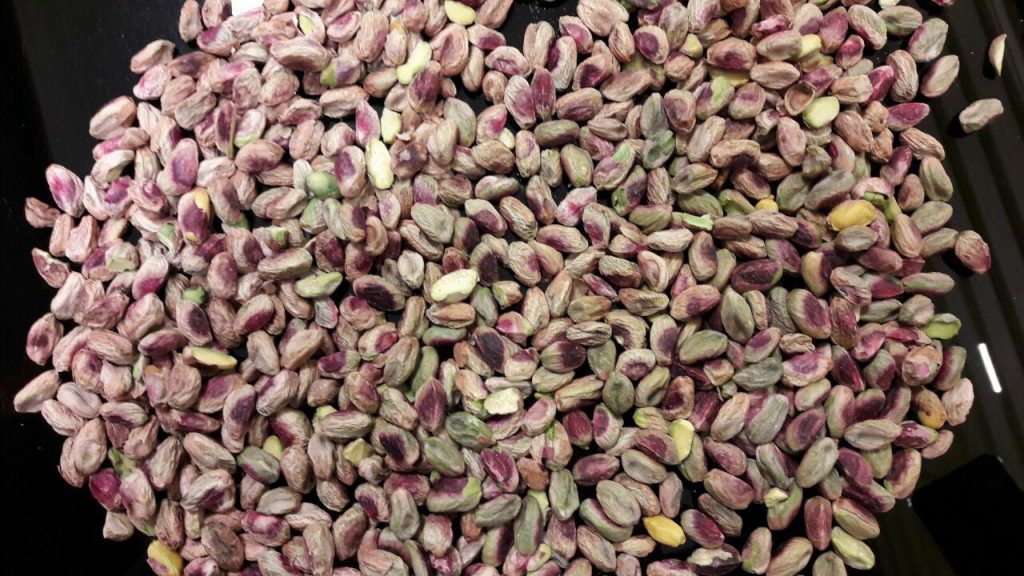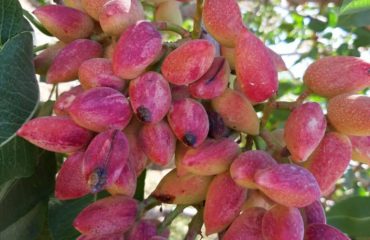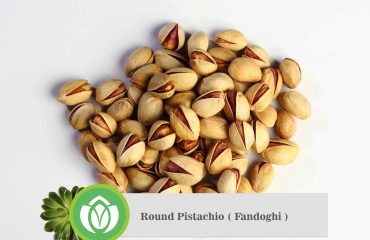Three important factors that lead to the rapid development of agriculture in the twentieth century are:
1- Proper and balanced nutrition
2- Plant breeding
3- Fighting pests
Of these factors, the role of nutrition is the most because a plant that has adequate and balanced nutrition is more resistant to diseases, a group of pests and even cold.
Today, modern agricultural science, relying on past experiences, has made soil health protection the top priority of its programs. With this aim, it emphasizes the consumption of raw or processed organic codes, and because these materials, while meeting plant nutritional needs, improve soil physics. And preserves humus water and strengthens beneficial microorganisms in the soil
Iran, with an area under cultivation of pistachio orchards amounting to 360,000 hectares, has more pistachio cultivation area in the world and accounts for more than 6% of total world exports. This product generates more than $ 800 million annually for the country and for hundreds Thousands of people have created jobs and income indirectly and indirectly. The average yield in pistachio orchards in Iran is about 1000 kg per hectare, if a number of gardeners harvest several times this number annually (the highest amount of pistachio harvest per hectare is 14000 kg. Certainly one of the main The factors for the success of these farmers are proper and balanced nutrition.
Nitrogen – Nitrogen
Nitrogen role:
Nitrogen is the main element in the growth of pistachio trees and due to the fact that most of the pistachio kernel is protein (20%), so the lack of this element strongly affects the quantity and quality of pistachio products.
Deficiency symptoms:
1- Reducing the vegetative growth of the tree
2- Reducing the number of seeds in the cluster
3- Falling flower buds
4- Yellowing of leaves in fruiting and autumn branches before the season
Consumption time:
Due to its high solubility, these fertilizers must be sprayed on the soil surface in the form of wheat sprayers. Also, leaching of mineral forms of this element is high and can be easily removed from the roots, so these fertilizers should be given to the plant three times:
1- March (the last water before the trees sprout) – 50% of nitrogen consumption should be given to the tree at this time, it is better to use the form of ammonium (NH4 + 4) because the absorption of this form of nitrogen does not depend on air temperature and It can also be absorbed in cold weather. This stage can increase the number of seeds in the cluster while growing sufficiently.
June (brain phase) – 25% of nitrogen consumption should be given to the tree at this time because most of the brain is protein (amino acids) that need a large amount of nitrogen to make it and nitrogen deficiency in this Time causes yellowing of leaves, falling of flower buds and aging in the tree.
3- September (last water before harvest) – 25% of nitrogen consumption should be given at this time, it is better to use the form of nitrate (NO3) because it should be absorbed immediately before the fall of trees. Nitrogen deficiency at this time causes fall Seed (increase ounce) mouth closed and growth delay in next year.
Note 1- In low-yield years (OFF), the second time of June should be removed or greatly reduced.
Note 2: In saline and alkaline soils (micromus <EC 8000, it is better to use only ammonium sulfate fertilizers in all three of the above stages. Note 3- For trees under 8 years (non-fertile) fertilizer should be applied from the bottom from March to March. At the end of July, with each irrigation period, they should consume a very small amount. Note 4: If nitrogen is provided to the plant in an organic form, it does not need to be used several times and only the plant needs to be used annually because nitrogen. Due to the metabolism of organic matter and the activity of microorganisms, it is released and gradually given to the plant.Note 5- The amount of fertilizer used depends on the amount of water (irrigation distance and depth) and the less the field water, the less fertilizer we should use. Use less bottom, otherwise it causes leaf and fruit wilting in the warm months of the year (July and August, abortion and fruit burns. Phosphorus: The role of phosphorus: This element plays an active role in cell division and due to its role ATP is also effective in plant energy production and is also involved in RNA-DNA structures. Symptoms of phosphorus deficiency: 1- Narrowing of branches 2- Reduction of lateral branches 3- Lightening of branches Like trees planted in the shade. 4- The leaves are dark green and dirty. How and when to use: Due to the fact that the pH acidity of soils in pistachio-rich areas is high and the soil can easily stabilize phosphorus and prevent its consumption by the roots, for this reason, we need too much mineral phosphorus. Give soil so that the soil can harvest enough, and on the other hand, this fertilizer must be placed in the soil as a groove (cumulative) that has the least contact with the soil. Therefore, from mid-autumn to mid-winter, a furrow should be dug to a depth of 40-40 cm on one side of the tree canopy and phosphorus fertilizer should be placed cumulatively at the bottom of the furrow. Consumption: Due to the high pH of the soil in pistachio-prone areas, the need for pistachios in soil phosphorus is about -25 PPM 30 so that the plant can harvest as much as needed from the soil (in suitable soils this amount is about 10 PPM, so if In pistachio-rich areas, the soil is very poor in phosphorus. Up to 900 kg of ammonium phosphate or terpyl superphosphate should be added to the soil, but if the phosphorus is available to the plant in an organic form and at a suitable pH, this amount will be greatly reduced. Potash: The role of potash: Potassium is the most important intracellular cation and the main role of potash in plants is to open and close the pores and regulate water in the plant.Cellular dehydration disrupts the work of many enzymes in the cell. Potassium protects the plant against dehydration, salinity, cold, pests and aflatoxins, and this element has the greatest effect on the pistachio smile. Deficiency Symptoms: Regular burn margin Leaf margin: Leaf margin in a regular band 3-4 mm wide And burnt brown color, which is seen first in the fruit-bearing branches and then in the whole tree. Pistachios Time and method of use: Potassium fertilizers Potassium sulfate is the only potash fertilizer that can be used in pistachio orchards. Like phosphorus pits should be placed from mid-autumn to mid-winter cumulatively in a furrow to a depth of 30-30 cm at the end of the canopy of one side of the trees. High pH and clay soil strongly stabilizes the mineral form of this fertilizer. It should be placed in the groove in such a way that it has the least contact with the soil. Consumption rate: To use potash fertilizers, leaf and soil decomposition is required. Potassium content in leaves should not be less than 1.5 and also soil potassium content should not be less than 250 ppm in sandy soils and 350 ppm in clay soils. For every ppm of potassium deficiency in the soil, 30 kg of potassium sulfate should be added to the soil. Of course, the ceiling for using this fertilizer is 600 kg per hectare. Micronutrients (Micronutrients: The plant needs less of some elements such as iron, copper, zinc, manganese, bromolybdenum for its growth and development, but the lack of any of them, like high-consumption elements in the plant causes problems. Due to the presence of carbonates and lack of organic matter, as well as the salinity and alkalinity of most soils, pistachio-rich areas absorb most of the trace elements in the soil, which is the best way to localize these elements at a suitable pH and with organic matter in Soil: Iron: The role of iron in pistachios: Iron is a very important element in the production of chlorophyll (plant vegetables) and many plant enzymes. Deficiency of these elements in pistachio orchards is more than any other element that can be Affects the intensity of plant growth and yield and in the long run causes the destruction and drying of the tree Symptoms of iron deficiency: 1- Paleness and lack of sufficient chlorophyll in the leaves (green discoloration of leaves) 2- Decreased number of seeds in Clusters and shrinkage of seeds 3- Irregular staining or drying on the leaf surface in July and August 4- Premature rupture of pistachio green skin leading to aflatoxin contamination of pistachios How and when to use: Due to the alkalinity of soils in pistachio-rich areas and severe stabilization of mineral forms, this element should be provided to the plant in the form of Fe-EDDHA iron chelate or with organic matter, if with organic matter. It should be used from the middle of autumn to the middle of winter in the grooves of one side of the trees and if we want to use the shape of Kalateh, it should be used from mid-February to mid-March, because this form of iron is washed away very quickly and is out of reach of roots. Leaf analysis is recommended and its concentration in the leaf should not be less than 100 ppm. To eliminate the deficiency of this element per 20 to 15 kg of Fe iron chelate
Molybdenum:
This is the only plant nutrient that is deficient in acidic soils and due to the alkalinity of the soil in pistachio-rich areas, there is no possibility of deficiency of this element and there is still no report of deficiency of this element in Iranian pistachio trees.
Soil modifiers
1- Plaster
2- Windy sand
Plaster:
Due to the alkalinity and calcareous soil of pistachio-rich areas, gypsum is certainly one of the best and cheapest methods of soil remediation of pistachio orchards in Iran.
Benefits of gypsum:
So far, more than 40 useful effects of gypsum in agriculture have been identified, some of which are mentioned here.
1- Reduction of soil pH (acidity)
2- Reducing soil EC (salinity)
3- Reduction of SAR (sodium absorption ratio)
4- Increasing the Ca / mg ratio and preventing magnesium poisoning
5- Prevention of poisoning
Time and method of use:
The best time to use gypsum in the soil is from mid-autumn to mid-winter, when the gypsum should be plowed on the surface of the soil and then heavy irrigation should be done.
Consumption gypsum is the mineral form of gypsum or gypsum (caso4,2H2O), which is known as dandruff gypsum. The amount of gypsum consumption is up to 150 tons per hectare. The gypsum used should not be salty and the amount of lime should not be high (maximum acceptable salinity for gypsum used is 6000 micromoles)
sand :
Windy sand is very useful in clayey, saline and low water lands. Although windy sand in clay soils can play the role of physical improvement of soil, but the main role of sandy sand is to improve irrigation management, prevent surface evaporation of water and prevent salt from rising to the soil surface, so it is recommended to sandy wind Height 5 to 8 cm should be poured as a surface layer on the soil surface and try to avoid mixing with the subsoil (poured as mulch on the soil surface). The wind sand used should not be saline (maximum salinity acceptable for sand The wind is 6000 micromoles.) Also, the blacker the wind sand, the better it is than the yellow wind sand.
Windy sand should be added to the soil surface from mid-autumn to mid-winter and then a heavy irrigation should be done to wash away possible salinity and remove it from the soil profile. Never in late March and early April (when the tree is green) windy sand. Do not do plaster or any tillage operations as it can severely dry out the trees.
Salinity of pistachio trees:
Salinity in pistachio trees is the most important physiological complication and causes a lot of damage every year.
Signs of salinity:
1- Uniform burn margin around the leaves, this burn margin is pale brown (khaki color) and gradually progresses and sometimes covers the entire surface of the leaf and only the main vein remains. A wave is seen (like tea drying in a saucer)
2- Burning the tips of fruits with the gum coming out
How to treat:
The best way to fight salinity is to irrigate. It is better to first remove the soil next to the trunk in a pan with a radius of 50 cm and let the water go into the pan. Also, if the gardener is not able to irrigate the flowers, he can pour the water by tanker or container only into the pots and avoid adding fertilizer from the bottom to these trees.
Micro-leaves of pistachio trees (red or red):
In this complication, the leaves and fruits of pistachio trees become small and red. And the fruits become hollow. At first, this complication appears in a tree in the field or a branch in a tree, but after a few years, it causes the tree to dry out.
How to treat:
The cause of microleafing in pistachio trees is the lack of copper and iron elements that can be provided to the plant through the soil or foliar spraying of these elements is done from mid-May to mid-June.
Difference between salinity symptoms and gum disease in pistachio trees:
The two causes of dryness of pistachio trees are salinity and humus (more than 90% of the material and can be distinguished by their symptoms. (By looking at the tree)
1- In salinity, first the leaves and then the fruit are dried, but in Gumuz, the leaves and the fruit are dried together.
2- In Gomoz, it dries naturally at once. (Dry green)
However, in salinity, the leaves begin to dry regularly from the margins and gradually reach the main vein. The color of the leaves is light brown and the effects of wave drying are seen on the leaves.
3- In Gomoz, the fruits dry naturally, but in salinity, the gum is secreted from the tip of most pistachio seeds and turns black, and then the seeds dry.
4- A tree that has dried up due to gum never grows on its own.
But a tree that has dried up due to salinity can regain fresh yellow and green buds from the tips of its branches.




